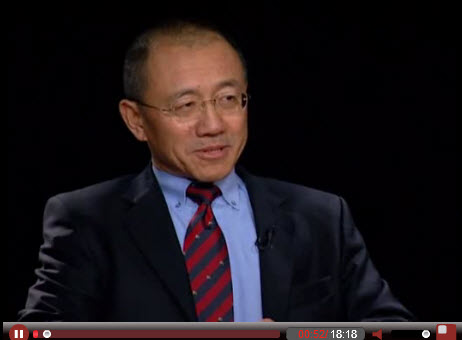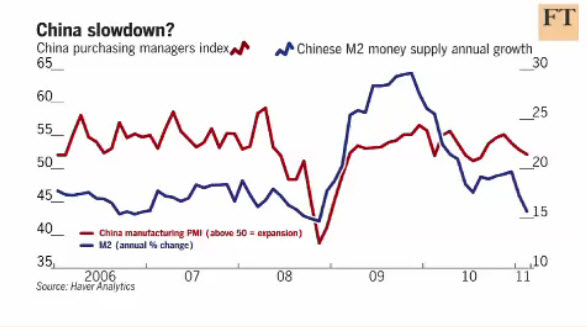Home » China (Page 3)
Category Archives: China
Ferguson on global re-convergence
Economic historian Naill Ferguson on the six “killer apps” (or institutions) in the West that generated the Great Divergence since 1700s, up until the recent rise of China. And he argues that gap between the West and the East is coming to an end, with China fast catching up with the West, leading to a re-convergence of the world economy.
In the interview, Naill Ferguson had many claims in his sharp observation of the history. However, despite being deeply intriguing, most of his claims remain to be just hypotheses. As a China watcher, I am not so certain at this moment that China’s surpassing of the US on per capita income level is inevitable, although I am positive that China’s total GDP will pass the US in no time.
For readers who are interested in the topic of the Great Divergence and Re-convergence, I would recommend two additional readings: The first is a classic by Ken Pomeranz, “The Great Divergence: China, Europe, and the Making of the Modern World Economy“; and the second is by Ian Morris, “Why the West Rules -For Now.”
No hard landing for China, or is it?
Here I included two pieces to address the question whether China will have “hard landing” or not. Hard landing is a fancy phrase to describe the situation when government tries control high inflation, it slams on the brake to dramatically slow down the economy, often leading to the outright recession. In China’s case, a hard landing, along with rising interest rate, may trigger the burst of the housing bubble.
The first piece is by Stephen Roach, former Chief economist, and Asian Chairman at Morgan Stanley, now a professor at Yale University. The second piece is a recent interview of Jim O’Neill, Chairman of Goldman Sachs’ Asset Management (or GSAM). Both are leading authorities on Chinese economy.
Roach took a big-picture view, and argues China is more likely to have a soft landing, not hard landing.
China’s economy is slowing. This is no surprise for an export-led economy dependent on faltering global demand. But China’s looming slowdown is likely to be both manageable and welcome. Fears of a hard landing are overblown.
To be sure, the economic data have softened. Purchasing managers’ indices are now threatening the “50” threshold, which has long been associated with the break-even point between expansion and contraction. Similar downtrends are evident in a broad array of leading indicators, ranging from consumer expectations, money supply, and the stock market, to steel production, industrial product sales, and newly started construction.
But this is not 2008. Back then, global commerce was collapsing, presaging a 10.7% drop in the volume of world trade in 2009 – the sharpest annual contraction since the 1930s. In response, China’s export performance swung from 26% annual growth in July 2008 to a 27% contraction by February 2009. Sequential GDP growth slowed to a low single-digit pace – a virtual standstill by Chinese standards. And more than 20 million migrant workers reportedly lost their jobs in export-led Guangdong province. By late 2008, China was in the throes of the functional equivalent of a full-blown recession.
Thanks to a massive fiscal stimulus, China veered away from the abyss in early 2009. But it paid a price for this bank-funded investment boom. Local governments’ indebtedness soared, and fixed investment surged toward an unprecedented 50% of GDP. Fears surfaced of another banking crisis, the imminent collapse of a monstrous property bubble, and runaway inflation. Add a wrenching European crisis to the equation, and a replay of 2008 no longer seemed far-fetched.
While there is a kernel of truth to each of these China-specific concerns, they do not by themselves imply a hard landing. Nonperforming loans will undoubtedly increase in response to the banking sector’s exposure to some $1.7 trillion of local-government debt, much of which was incurred during the stimulus of 2008-2009. But the feared deterioration in loan quality is exaggerated.
Jim O’Neill Interview (courtesy of CNBC): He thinks the chance for a hand landing is very slim.
Update 1 (Oct. 30, 2011):
Jim Chanos share his recent view on China – he continues to short China’s banking sector and real estate developers. He believes Chinese banking system just started to have cracks; there is more to come.
Pecan love
An interesting piece on how China’s insatiable demand for the US pecan drives up its price.
Pecans are as all-American as anything can be. Washington and Jefferson grew them. They are the state nut of Arkansas, Alabama and Texas. The U.S. grows about two-thirds of the world’s pecans and chews most of them itself. For generations, pecan prices have fallen with bumper crops and soared with lousy ones. But lately, they’ve only been going up. A pound of pecans in the shell fetched $2.14 on average last year, according to the U.S Department of Agriculture, nearly double what they brought three years earlier.
The reason: The Chinese want our nuts. Five years ago, China bought hardly any pecans. In 2009, China bought one-quarter of the U.S. crop, and there’s no sign demand is abating.
The impact of China’s rebalancing
The impact of China’s rebalancing, and its implications on global interest rates, by Martin Feldstein. Marty seems to suggest that if China were to rebalance its economy successfully, debtor countries (especially the US) will face a much higher equilibrium interest rate than the past couple of decades. I doubt this will happen very soon – rather it’s a slow process.








